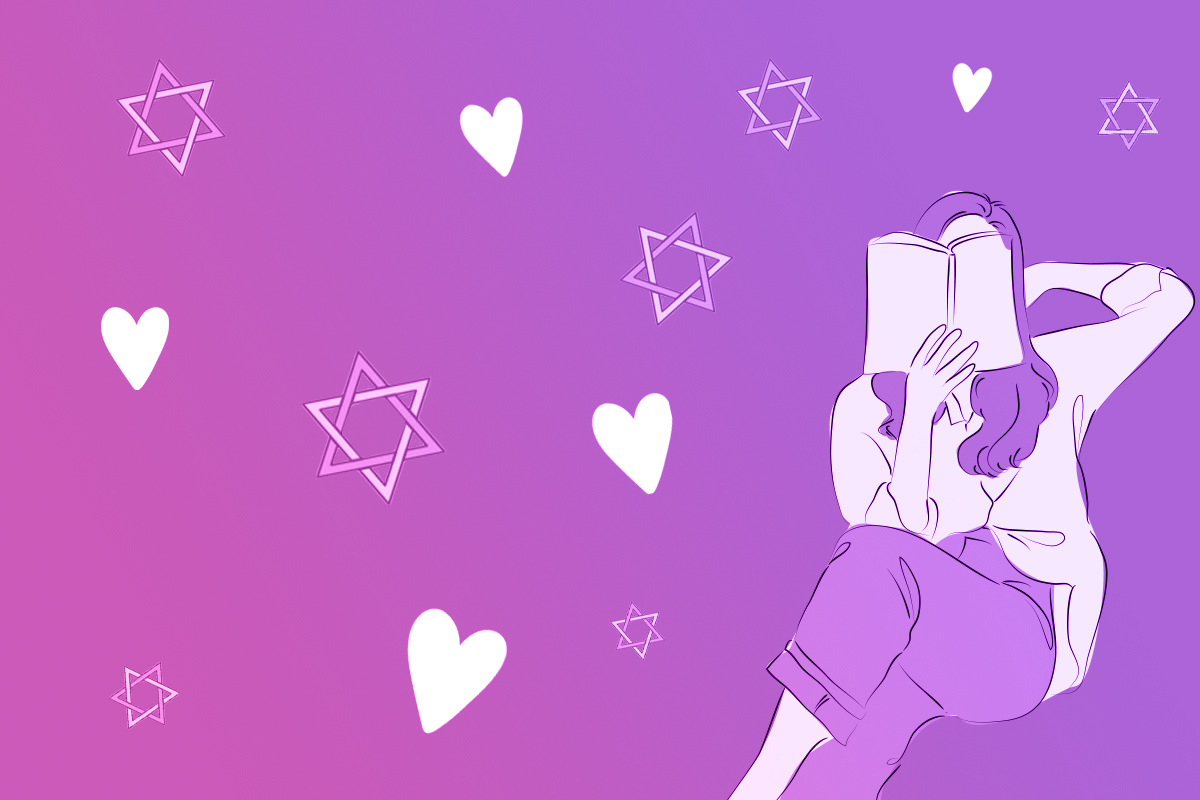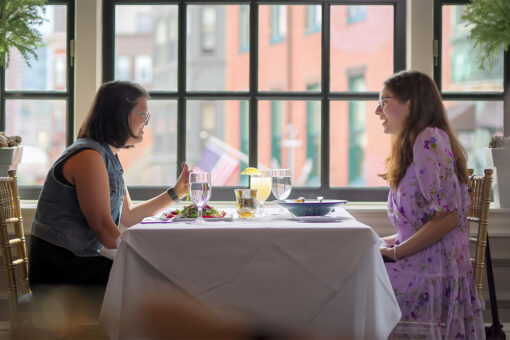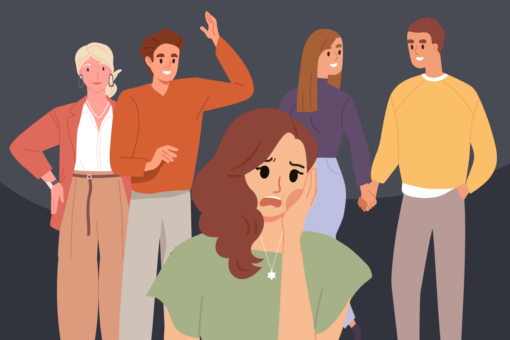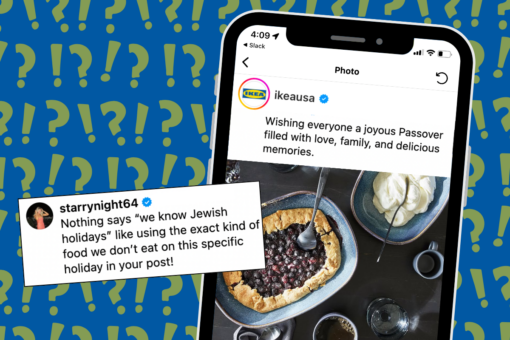What does it mean to get a happily ever after?
As someone who writes romance novels, specifically queer, Jewish ones, this isn’t a hypothetical question. (I sometimes call the genre “Bash Brothers meet bashert,” and if that made you laugh, gosh, do I have a book for you.) Writing about characters who are queer and/or Jewish contains degrees of complexity to how characters get — and what the narrative treats — as a happily ever after (HEA).
Before I delve in, a few definitions: I err on the side of being relatively broad in defining Jewish romance. Jewish romances, for my purposes, are romances that focus on at least one major Jewish point-of-view character, generally, but not always, written by a Jewish author. To (Jewishly) add a definition within a definition, romance as a genre is generally categorized as a narrative with a central love story and a happily ever after, meaning that the characters must be together and alive at the end of the book. So “Romeo & Juliet” isn’t a romance-romance but “She’s All That” is.
In recent years, I’ve also heard a third prong to this definition: that the book must be optimistic. This doesn’t mean that it’s free of angst or conflict, or that it doesn’t deal with heavy topics, but the success of the main couple, and of the other protagonists, must be assured to qualify as a romance.
The last requirement — that of optimism and ensured success — can make writing queer romance or Jewish romance or any romance about people who are marginalized more complex. What does it mean to be optimistic when there are systems that, historically and presently, prevent that kind of optimism? And how should the author deal not only with those characters, but also the experience of the reader, who, after the last page, is left in a world where such systems remain in place?
This doesn’t necessarily mean that Jewish romances must be related to war or genocide. I don’t want to feed the notion that books with Jewish characters and themes must be laden with suffering. Heck, I mainly write about baseball, a proverbial kid’s game that people play in glorified PJs.
But many Jewish books do wrestle with this as a conundrum, be it historical romance like those written by Rose Lerner and Felicia Grossman, or contemporary romance like that of Rosie Danan. In my queer, Jewish romance “Unwritten Rules,” my main character, Zach Glasser, is Jewish, a professional baseball catcher, hard of hearing and gay. The main conflict of the book centers around him wanting to fulfill two sets of (what he believes to be) mutually exclusive obligations: his parents’ pressures for him to get married and have a family, and his dream of playing baseball and having a successful career. Of course, things become more complicated when he meets, and falls in love, with a teammate, Eugenio Morales.
I’m going to spoil the end of the book here, because it is a romance and it does have a Happily Ever After: Zach and Eugenio do, indeed, end up together. But they don’t destroy all of structural homophobia (or racism, antisemitism, classism, xenophobia or any of the other -isms bound up in professional baseball) in the process.
“Unwritten Rules” has what I feel is an optimistic ending that’s also a Jewish ending: an ending with characters who have to make their peace with the world as it is, but with the promise to undertake changing it for the better. (They can have a little Pirkei Avot, as a treat.) So if romances require an HEA, Jewish ones also feature a TKO: tikkun olam.
From my perspective, tikkun olam is the work of extending our relationships past our immediate communities and to caring for, and pursuing justice for, the world as we’d want it for ourselves. It has an asymptotic relationship with perfection, as something that can be approached but never fully achieved. Call it optimism if you’d like, or hope, or an endless ladder we nevertheless are charged to climb.
Romances with marginalized characters often end in a similar thematic place. Characters achieve a smallish measure of peace and a larger desire to keep going. It makes sense. Romance novels are, after all, built on tension: characters as they are and characters as they could be, once they set aside their misbeliefs and undergo the work of repair, both separately and together.
In Jewish romance, that HEA often extends to the broader TKO. After all, tikkun olam also hinges on tension, that between the world as it is, fundamentally flawed but never irreparable, and as it could be. And the overlay of the two should cause agitation, discomfort, a desire for and a willingness to pursue change. It’s a happily ever after that has to extend beyond the main couple (or however many) into the community and society they inhabit.
This challenge isn’t unique to Jewish romance. Any romance that’s historically situated or in a universe of the world in which systematic -isms — racism, sexism and so on — are part of the world-building has to wrangle with the same questions. Courtney Milan, who writes both historical and contemporary romance, summed it up well in this thread, in which she writes, “No matter how much despair your feel at the global level, you can always, always find hope at a smaller scope. As an author of books with happy endings, the trick is to find the place to set that scope.”
https://twitter.com/courtneymilan/status/1299743777964265472
It can be difficult to solve structural prejudices in a believable way within the course of a narrative. But it’s not hard to show your characters wrestling with, and succeeding at, improving their local circumstances. My queer Jewish characters don’t solve homophobia and antisemitism and everything else within the narrative, but they identify and act on their locus of control. As one character puts it, “Do what people like us usually do in these circumstances — if they won’t make space for you, you make your own space.”
As both a writer and a reader, local change can, at times, feel facile. If it’s fiction, why not burn it all down and start again? If romance is built on characters who dream of — and get — real, lasting love, why not extend such fantasy to the world around them?
Here, too, romance novels are often careful to distinguish between an HEA and a life devoid of challenge or conflict. The last pages (and sometimes, but not always, an epilogue) of a romance are often termed a “final image.” It’s the mental picture the reader is left with — that a true happily ever after doesn’t mean that characters will never face adversity, but that they will do so together.
Similarly, a true tikkun olam ending in a Jewish romance novel doesn’t mean a final image of a world that’s perfected, but rather the process by which we work toward an ideal we never achieve but are not permitted to abandon. It acknowledges that the work of love — both romantic love and in acts of lovingkindness — is always messy, imperfect and unfinished. Happiness, therefore, has to be situated within ourselves and distributed among the people and communities we’re connected with. Which sounds like a pretty great way to be, ever after.
If you’re looking for Jewish romances but don’t know where to begin, check out these recommendation lists: We’re Obsessed With These Jewish Romance Novels and The One Thing We Can’t Get Enough Of: Adult Jewish Romance.



